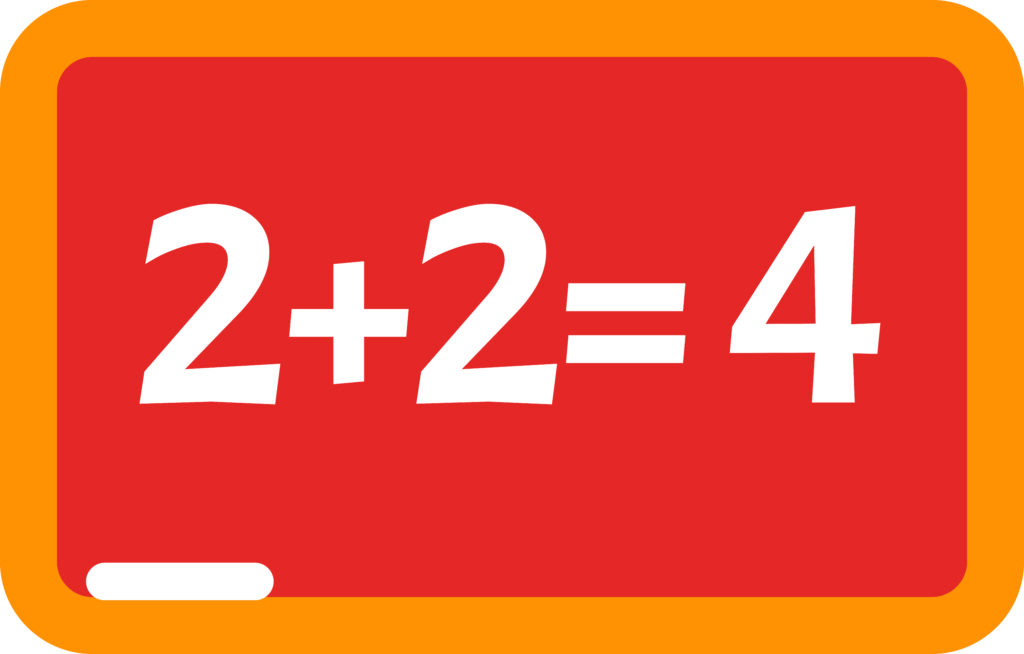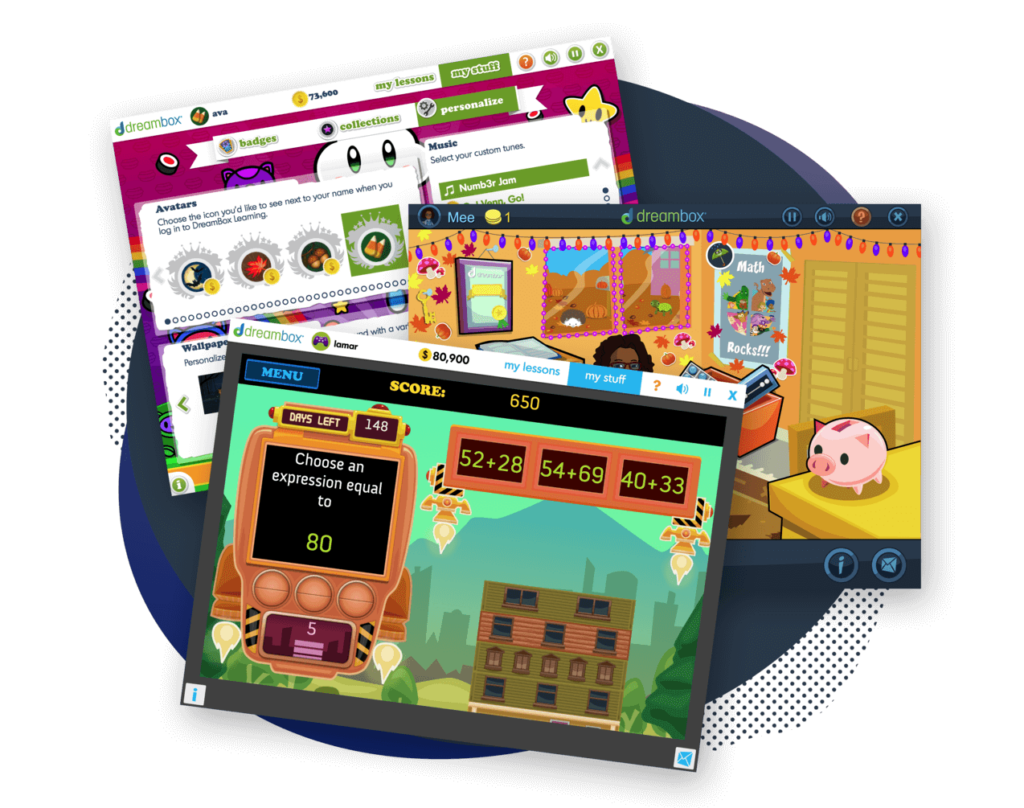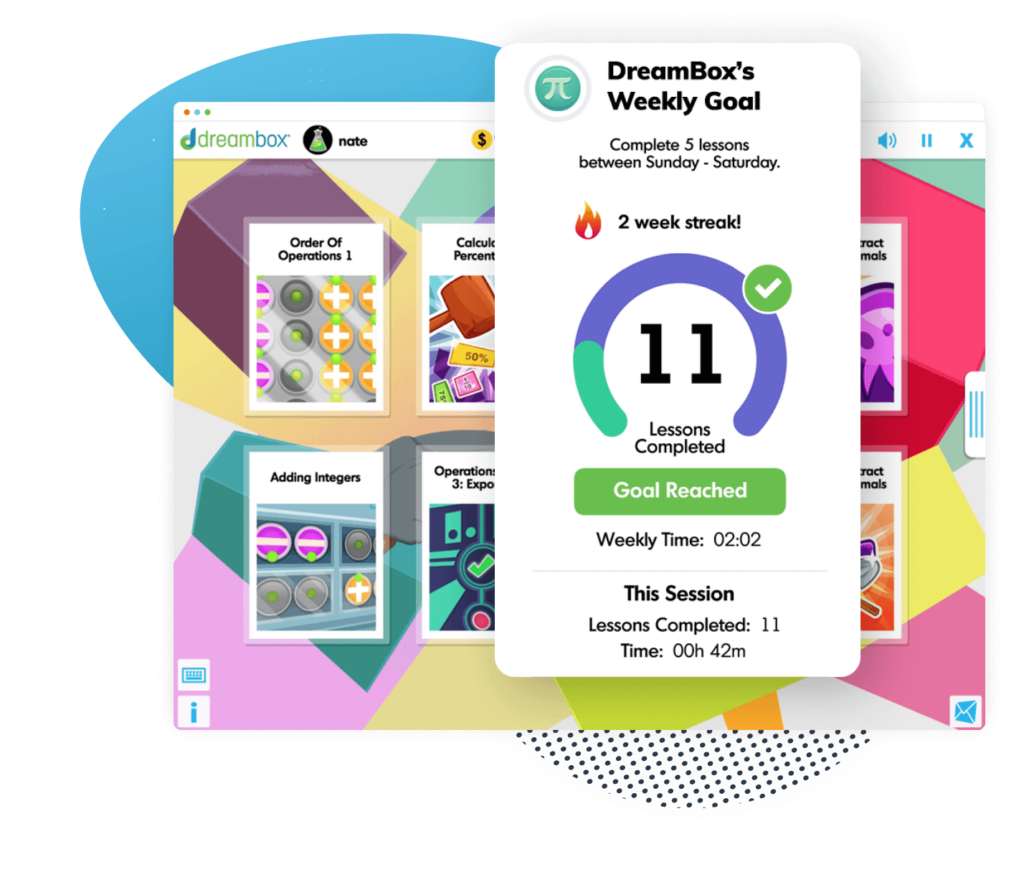What is Math Fluency?
Wondering what math fluency really means? This article explains how fluency develops at each age and stage

Author
Katie Wickliff
Published:
September 2025
Key takeaways
- • Math fluency develops over time and with plenty of practice
- • The math skills taught at each age are based on specific research-based guidelines
- • Math activities increase fluency by encouraging deeper thinking and comprehension
Math fluency is the ability to solve problems quickly, accurately, and flexibly. Fluent students have a strong conceptual understanding of math and can choose the best strategy to solve a problem. While fluency is an essential part of math education, it takes practice to develop. In this guide, we’ll break down what math concepts your child is expected to know, from toddlers learning basic shapes and numbers to teenagers tackling algebra and statistics. We’ll also suggest quick challenges and activities to make developing math fluency fun.

Age-by-Age Breakdown of Math Skills
Schools determine what math concepts students should know by following state or federal education guidelines. In the U.S., many states use the Common Core State Standards, which outline what students should know by the end of the school year. States and schools that don’t follow Common Core have their own research-based standards recommended by their state department of education or organizations like the National Council of Teachers of Mathematics. The following breakdown of math skills by age is based on these guidelines.
Early Childhood (Ages 2–5)
Toddlers and preschoolers develop foundational skills, including number recognition, counting, and identifying basic shapes. During the toddler years, don’t worry about math fluency, as true comprehension begins to develop later. Instead, offer playful, hands-on learning that helps kids develop a positive attitude toward math. Simple activities include:
- Counting Songs: Plenty of songs and rhymes help kids learn numbers. Some classic favorites like “Ten in the Bed,” “The Ants Go Marching,” or “One, Two, Buckle My Shoe” are perfect for the youngest learners.
- Shape Hunt: Point out circles, squares, and triangles found around in the house, in the backyard, or around the playground. Identifying shapes in the real world helps kids connect math to everyday life.
- Color Sort: Give your child a variety of single-colored objects and work together to sort the objects. Recognizing colors and sorting them into categories builds the foundation for more advanced categorization in elementary school.
Elementary Years (Ages 6–10)
In elementary school, kids now recognize numbers and begin to learn to work with them. From 1st grade to 5th grade, they build basic fluency in addition, subtraction, multiplication, and division, learning how they relate to one another. They also concentrate on place value, fractions, measurement, and geometry. As they progress through elementary school, students build upon the knowledge learned in prior years, strengthening their math fluency and preparing them for middle school learning. These activities help build fluency:
- Card and Dice Games: playing “War” using addition, subtraction, or multiplication is a quick way to review math facts. You can also use playing cards to practice place value by creating the largest possible number, or use dice to create fractions and add, subtract, or simplify.
- Measurement Practice: Using rulers, measuring tape, or other household objects to measure any interesting object, then compare them using terms like bigger, smaller, taller, shorter, thicker, thinner. With practice, children begin to use these terms naturally as part of their everyday vocabulary.
- Online Games: There are many online resources that use engaging games and activities to help kids achieve math fluency. Be sure to check out Dreambox Math, a personalized online program that supports your child’s unique math development.
Table of contents
Access more math practice with DreamBox
Turn math into playtime with DreamBox Math
DREAMBOX MATH
Get started for FREE today!

Middle School (Ages 11–13)
In middle school, students will extend their knowledge of arithmetic to read, write, and solve expressions with variables– letters that represent numbers. They’ll be able to identify parts of an expression with mathematical language (sum, term, factor, product, etc.) and perform arithmetic expressions using the order of operations. Additionally, middle school students dive deeper into fractions and perform more advanced geometry, like finding the area and volume of a shape. If students become fluent in basic math facts and concepts during the elementary school years, they’re more able to focus on more complex skills and problem-solving. Plenty of activities support middle school math fluency, such as:
- Fractions in the Kitchen: Working with fractions in real-world situations helps students build confidence and fluency. Middle schoolers can handle cooking or baking with minimal supervision, so encourage them to halve or double recipes to practice fractions while making the meal of their choice!
- Math Puzzles or Logic Games: In middle school, students develop more abstract thinking skills. Puzzles, brain teasers, or logic games are a perfect way to practice flexible problem-solving. Try Sudoku, cryptograms and ciphers, or logic puzzles (we love Murdle!)
- Budgeting: Financial literacy is an important skill, and it’s never too early to learn how to budget. In addition to strengthening arithmetic fluency, budgeting encourages mental math, estimation, and problem-solving in real-world situations. Involve middle schoolers in budgeting for household expenses, whether it’s groceries or a special vacation.
High School (Ages 14–18)
High school math becomes even more abstract and specialized, so a solid understanding of concepts learned in elementary and middle school will help students succeed in a rigorous environment. High school students focus on specific branches of math, such as algebra, geometry, statistics, and calculus. However, math fluency in high school goes beyond memorizing formulas and equations– students are now expected to deeply understand math concepts, make connections between different areas of math, and confidently apply their knowledge to complex problems. Even though most high schoolers are capable of working independently, parents can still help their child master fluency with activities that encourage critical thinking and problem-solving. Activities include:
- Geometry projects: High school students can be a huge help with measuring angles and lengths for home projects, such as building a garden or constructing a playhouse for a younger sibling.
- Data analysis: If your high schooler is a sports fanatic, encourage them to interpret statistics of their favorite team or league. They can calculate averages, analyze past data to predict performance, and model their knowledge with graphs and tables.
- Math Debate: Choose a real-world problem that can be solved using multiple methods. If you have a group of students, divide into teams to calculate the solution. Then, students present the problem and explain their reasoning. Calling attention to the different ways to solve a problem helps develop flexible thinking.

The math program that drives results
Get started today!
DreamBox adapts to your child’s level and learning needs, ensuring they are appropriately challenged and get confidence-building wins.
How to Support Math Development at Home
You can support your child’s math development at home by noticing ways to use math in everyday life. Cooking, measuring, and grocery shopping are natural opportunities to practice math concepts. Singing songs, playing games, and reading books are fun ways to bond with your child and show them that math can be enjoyable. For older children, encourage critical thinking and problem solving skills through using different strategies to reach an answer. Most importantly, never hesitate to reach out to your child’s teacher if you have questions about supporting their math development at home. Teachers know that a strong school-home partnership is the best way to help their learners grow into fluent, confident mathematicians.
FAQs about Math Fluency
You can practice math fluency at home by noticing the ways you use math every day– budgeting for groceries, doubling a recipe, or building a bookcase– and involve your child in the task.
The stages of math fluency are early childhood, early elementary, upper elementary, middle school, high school, and beyond. Achieving fluency at the early stages makes students more confident when learning more complex concepts and skills later on.
According to the National Council of Teachers of Mathematics, the four components of math fluency are accuracy, efficiency, flexibility, and understanding.
Although fluency and automaticity are often used interchangeably, they are not the same. Math fluency is the ability to solve problems efficiently and accurately while also understanding the concepts beyond the problems. Automaticity is being able to provide an automatic response. Students with strong automaticity aren’t always fluent, meaning that they may get the answer right but be unable to explain their reasoning.
Take at home math practice to the next level
Empowering parents and educators to make math practice more impactful. Plus, your kids will love it.
